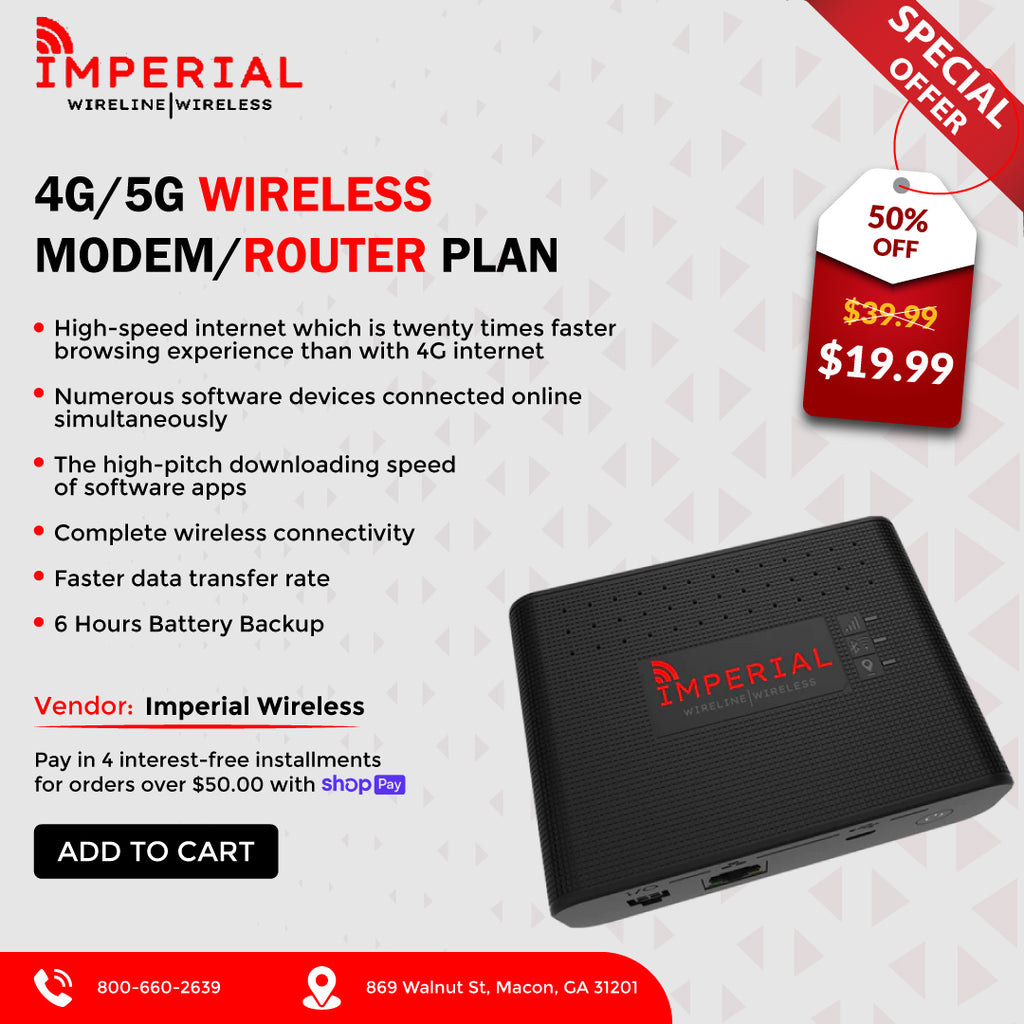Buy Best 5G Wireless Modem & 5G- Imperial Wireless
Posted by HASSAN JAVAID

With wireless modems, PCs can join a WLAN without the need for Ethernet wiring or other forms of physical cabling. They connect to a WLAN using cellular, satellite, or Wi-Fi protocols. It can subsequently offer online services. This contrasts with dialup and DSL modems, which link using telephone lines, while cable modems connect to the web via cable TV lines.
A laptop's PCMCIA 5G wireless modem card can give users access to the Internet via public "hotspots" for mobile applications. Some hotspots have a nominal membership cost, while others are free.
The Wire-free Modem
Wire-free modems are compatible with a particular design. It has a variety of networks that use proprietary protocols. While cellular networks can run at roughly 300 kilobits per second, some protocols, such as CDPD (Verizon), GPRS, and EDGE (AT&T and Cingular), are even slower than dialup (KBS). At advertised speeds of 400–700 kbps, the Imperial Wireless EVDO cellular variant, which is more recent, competes with broadband services. Besides this, we also have exciting data bundles for you.
Computers can access the net using a modem router combo instead of an Ethernet cable.
Wi-Fi another well-liked network for mobile modems, can run at a decent 400 kbps. Many cafes and other hotspots use Wi-Fi. A more recent standard called WiMAX provides even higher speeds and more capabilities.
A modem will integrate the module, which will also have several extra features. The features will include additional hardware interfaces, application software, hosted and important modes, a SIM card slot, an onboard MCU, other protocols like Bluetooth, and end-device certification. Modems are the simplest way to incorporate cellular connectivity into a design, perfect for swiftly entering the market.
It would help if you made sure the modem you purchase has the capabilities necessary for the network(s) you desire to connect to, as modems are certified as compliant with specific standards and protocols.
Router Modem Combo
In a router/modem combo, a modem is housed inside a router, as the name suggests. This makes it possible for numerous computers or devices to join a single network. Because it does away with the requirement for a network to have a separate router-modem combo, this combination is every day.
What to look for in a wire free modem generally is:
- Modem Speed.
- Ethernet, CPCD, GPRS, ISDN, EVDO, Wi-Fi, etc., are among the supported protocols.
- Frequency band: VHF, UHF, 900 MHz, 2.4 GHz, 5 Hz, and 23 GHz.
- Direct sequence spread spectrum, sometimes known as frequency hopping, is a radio method.
- Several sending and receiving channels.
Maximum Signal Power.
When compared to half-duplex, the full-duplex capability allows for simultaneous transmitting and receiving for speedier data transfer.
Modems make it possible for remote workers to maintain contact while traveling.
A broadband modem can also provide a DSL or cable connection at your residence or business. This avoids the need for a physical wire to connect each desktop or laptop to the modem, as all computers in the home can talk with the broadband modem through network adapter cards. The same company should make the network cards (USB or PCMCIA adapters) as the modem/router or explicitly say they are compatible.
Modems for broadband
Mobile hotspots are modems that are connected to cellular services. Technically, you can tether your smartphone to another local device by using it as a modem. Depending on the technology, broadband services may occasionally need a modem to connect the home network to the provider's local radio equipment.


